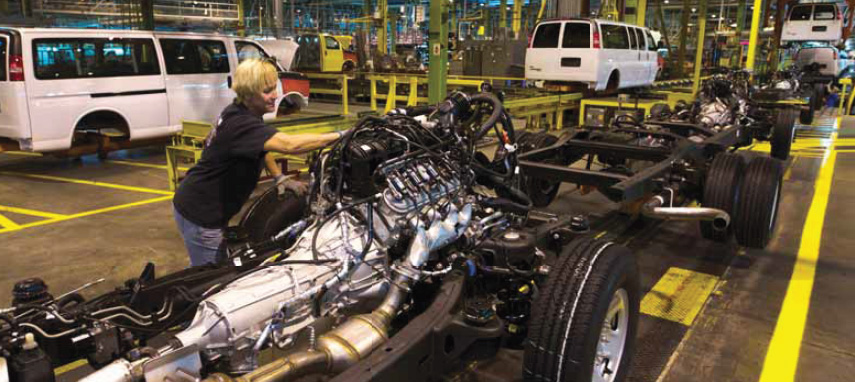
AMS explores the lessons that were learned from the 2008 economic collapse and how the American, Canadian and Mexican automotive manufacturing industries have used them to move forward.
Long before the 2008 financial crisis hit there were signs that the North American auto industry – dominated by the iconic giants General Motors, Daimler-Chrysler and Ford – was in trouble. Bloated and wasteful, these companies had dismissed the idea of employing leaner manufacturing processes, scrapping their gas-guzzling lines of profitable SUVs, and investing in more efficient technology – even as foreign automakers started to surpass them on the power pyramid. “The tail was wagging the dog,” says Tim Dunne, director of global automotive operations at JD Power & Associates. “Because there was so much production capacity, many automakers were selling cars with steep discounts or at a loss simply to keep their factories running. They had so much capital investment tied up in those factories they needed to show a return on capital.”
The fact that US vehicle financing was flowing as freely as mortgage financing didn’t help. Not only were plants
Kevin W. Williams, president and managing director for GM Canada says: “Canada weathered the recent economic troubles better than most countries, and while auto sales showed some decline throughout, by and large sales levels remained relatively constant. As a result, we expect modest growth as the economy strengthens, but we also expect
this highly competitive market to become even more so. The ultimate winners are customers, who are going to benefi t from better value and
better products. “GM’s 2009 restructuring went a long way to ensuring we’re competitive with other automakers in Canada. However, in a highly competitive global marketplace, we cannot sit still as the rest of the world races
forward, particularly with rising commodity prices, a higher Canadian dollar, and other cost pressures. We must stay focused on improving the efficiency and productivity of our operations to ensure that we are maximizing value for our shareholders. “In the past year we have announced significant investments in our Canadian manufacturing facilities including:































